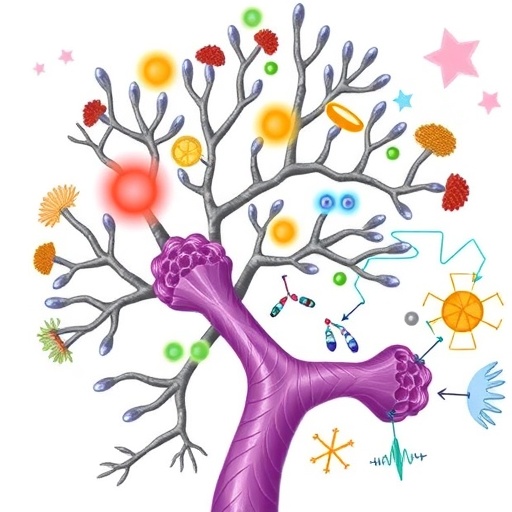
Credit: Stefan Zimmerman
A type of anti-bacterial T cells, so-called MAIT cells, are strongly activated in people with moderate to severe COVID-19 disease, according to a study by researchers at Karolinska Institutet in Sweden that is published in the journal Science Immunology. The findings contribute to increased understanding about how our immune system responds against COVID-19 infection.
“To find potential treatments against COVID-19, it is important to understand in detail how our immune system reacts and, in some cases, perhaps contribute to worsening the disease,” says Johan Sandberg, professor at the Department of Medicine, Huddinge, at Karolinska Institutet and the study’s corresponding author.
T cells are a type of white blood cells that are specialized in recognizing infected cells, and are an essential part of the immune system. About 1 to 5 percent of T cells in the blood of healthy people consist of so-called MAIT cells (mucosa-associated invariant T cells), which are primarily important for controlling bacteria but can also be recruited by the immune system to fight some viral infections.
In this study, the researchers wanted to find out which role MAIT cells play in COVID-19 disease pathogenesis. They examined the presence and character of MAIT cells in blood samples from 24 patients admitted to Karolinska University Hospital with moderate to severe COVID-19 disease and compared these with blood samples from 14 healthy controls and 45 individuals who had recovered from COVID-19. Four of the patients died in the hospital.
The results show that the number of MAIT cells in the blood decline sharply in patients with moderate or severe COVID-19 and that the remaining cells in circulation are highly activated, which suggests they are engaged in the immune response against SARS-CoV-2. This pattern of reduced number and activation in the blood is stronger for MAIT cells than for other T cells. The researchers also noted that pro-inflammatory MAIT cells accumulated in the airways of COVID-19 patients to a larger degree than in healthy people.
“Taken together, these analyses indicate that the reduced number of MAIT cells in the blood of COVID-19 patients is at least partly due increased accumulation in the airways,” Johan Sandberg says.
In convalescent patients, the number of MAIT cells in the blood recovered at least partially in the weeks after disease, which can be important for managing bacterial infections in individuals who have had COVID-19, according to the researchers. In the patients who died, the researchers noted that the MAIT cells tended to be extremely activated with lower expression of the receptor CXCR3 than in those who survived.
“The findings of our study show that the MAIT cells are highly engaged in the immunological response against COVID-19,” Johan Sandberg says. “A likely interpretation is that the characteristics of MAIT cells make them engaged early on in both the systemic immune response and in the local immune response in the airways to which they are recruited from the blood by inflammatory signals. There, they are likely to contribute to the fast, innate immune response against the virus. In some people with COVID-19, the activation of MAIT cells becomes excessive and this correlates with severe disease.”
###
This research was supported by the Swedish Research Council, the Swedish Cancer Society, the Swedish Heart-Lung Foundation, the Knut and Alice Wallenberg Foundation, Nordstjernan AB and Karolinska Institutet.
Publication: “MAIT cell activation and dynamics associated with COVID-19 disease severity,” Parrot, T., Gorin, J. B., Ponzetta, A., Maleki, K. T., Kammann, T., Emgård, J., Perez-Potti, A., Sekine, T., Rivera-Ballesteros, O., the Karolinska COVID-19 Study Group, Gredmark-Russ, S., Rooyackers, O., Folkesson, E., Eriksson, L. I., Norrby-Teglund, A., Ljunggren, H. G., Björkström, N. K., Aleman, S., Buggert, M., Klingström, J., Strålin, K., and Sandberg, J. K., Science Immunology, online September 28, 2020, doi: 10.1126/sciimmunol.abe1670
Media Contact
Press Office
[email protected]
Original Source
http://dx.
Related Journal Article
http://dx.





